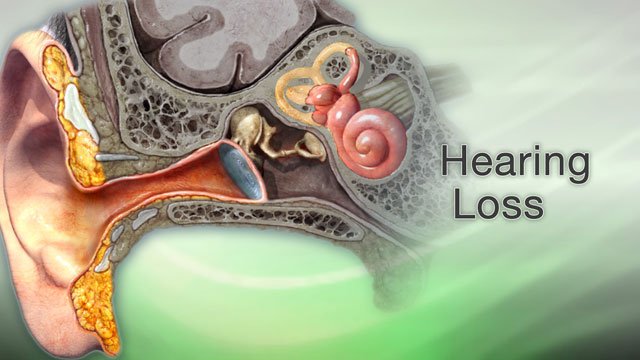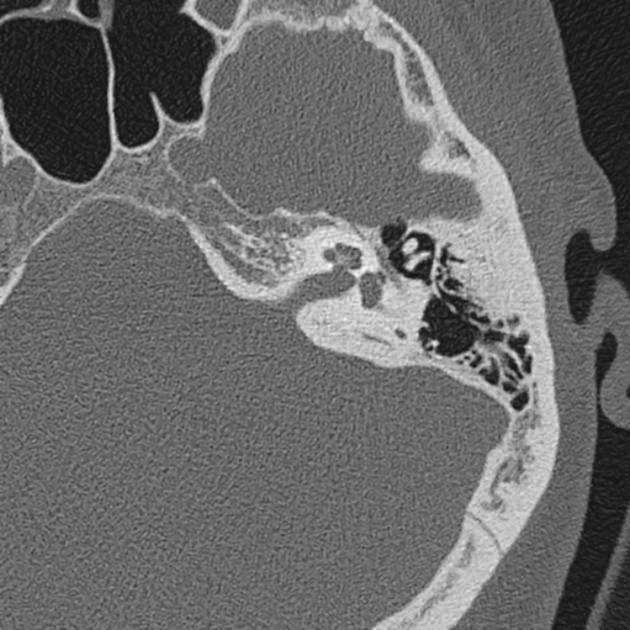Hearing Loss
content of this page
1- Introduction
2- Anatomical Overview
3- Causes
4- Treatment
Introduction

Anatomical Overview
Hearing is a complex process that involves the ears and the auditory nervous system. The ear can be divided into three main parts: the outer ear, the middle ear, and the inner ear. Sound waves enter the outer ear and travel through the ear canal, where they strike the eardrum, causing it to vibrate. These vibrations are then transmitted through the middle ear by three small bones called the ossicles— the malleus (hammer), incus (anvil), and stapes (stirrup). The stapes’ vibrations create waves in the fluid-filled cochlea of the inner ear. These waves stimulate hair cells within the cochlea, converting the mechanical vibrations into electrical signals. These signals are then transmitted through the auditory nerve to the brain, where they are interpreted as sound. Any disruption in this complex process, whether due to damage to the ear structures, nerve damage, or other factors, can result in hearing loss.

Causes
Age (Presbycusis): Gradual hearing loss that occurs as a natural part of aging, typically affecting high-frequency sounds first.
Noise Exposure: Prolonged exposure to loud noises, such as machinery, music, or explosions, can damage the hair cells in the inner ear.
Genetics: Some types of hearing loss are hereditary, passed down from parents to children.
Medical Conditions:
- Ototoxic Medications: Certain medications can damage the inner ear, leading to hearing loss.
- Infections: Infections like meningitis, mumps, or cytomegalovirus can cause hearing loss.
- Trauma: Head injuries or exposure to sudden, loud noises can damage the ear structures.
- Tumors: Benign or cancerous growths in the ear or on the auditory nerve can cause hearing loss.
Congenital Factors:
- Some babies are born with hearing loss due to genetic factors or prenatal exposure to infections or drugs.
Autoimmune Disorders: Conditions like Ménière’s disease, which affects the inner ear, can cause hearing loss.
Malformation of the Ear: Structural abnormalities of the ear can interfere with sound transmission.
Excessive Earwax (Cerumen): Build-up of earwax can block the ear canal and impair hearing.
Treatment
Hearing Aids: These devices amplify sounds and are beneficial for many people with hearing loss, especially age-related or mild to moderate hearing loss.
Cochlear Implants: For individuals with severe to profound hearing loss who do not benefit from hearing aids, cochlear implants can be a viable option. These devices bypass damaged parts of the inner ear and directly stimulate the auditory nerve.
Assistive Listening Devices (ALDs): These include devices like FM systems, which improve hearing in specific situations, such as classrooms or meetings.
Implantable Hearing Devices: Bone-anchored hearing aids (BAHA) or middle ear implants are options for some types of hearing loss.
Surgical Procedures: In some cases, surgery can correct certain types of hearing loss, such as those caused by a perforated eardrum or otosclerosis.
Medications: Antibiotics are used to treat some types of ear infections that cause hearing loss. Steroids can reduce inflammation and improve hearing in certain conditions.
Counseling and Rehabilitation: This can help individuals cope with the emotional and psychological aspects of hearing loss and learn strategies to improve communication.
Lifestyle and Home Remedies: These can include using captioned telephones, ensuring good lighting during conversations, and reducing background noise.